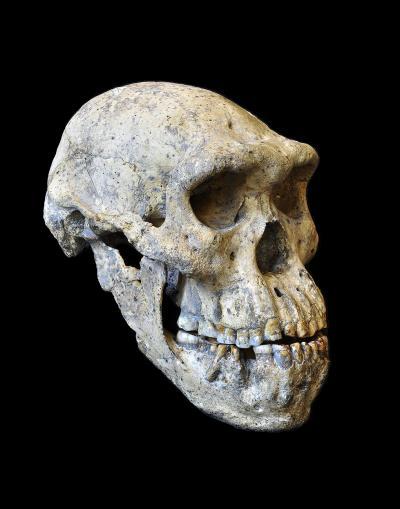Australopithecus and onwards
The previous length discussion examined the fossil evidence close to the time of the human-chimpanzee common ancestor, and has been enough to show that the fossil evidence is not just a handful of teeth, and furthermore shows the existence of creatures that are not human, not ape, but have characteristics reminiscent of both. In other words, they are transitional. Space precludes an in-depth examination of the Australopithecus and Homo evidence[1], but the representative sample that follows will suffice to show that the fossil evidence for human evidence is substantial, and shows unarguable evidence of our evolutionary origins.
Australopithecus afarensis
This hominin[2] lived between 3.9 to 2.7 million years ago, and is gracile like its likely descendant Australopithecus africanus. The remains above are that of the famous specimen ‘Lucy.’ Below is the well-preserved remains of a 3 year old female member of A. afarensis, known as 'Selam.'[3]
Australopithecus garhi
Existed between 2 and 3 million years ago. Another candidate for the immediate ancestor of the genus Homo.[4] Post-cranial remains found nearby may belong to it which show a human-like ratio of humerus to femur and an ape-like ration of upper and lower arm.
Australopithecus africanus
Early hominid that lived between 2-3 million years ago. Gracile. Probably on the line leading to the genus Homo.
Skull depicted is that of the famous 'Taung Child' which was likely killed by a bird of prey.[5]
STS 5 or “Mrs. Ples”. Most complete skull of this species found in South Africa, and is dated to around 2 million years of age.[6]
STS 14. Found near STS 5. Unmistakeable evidence of pre-Homo bipedality given the nature of its pelvic girdle
STW-573 “Little Foot”
Remarkably complete hominin[7] found between 1994 and 1998 in South Africa that includes a complete forearm and hand, most of the lower limbs, skull, pelvis fragments, ribs and vertebrae. 'Little Foot' was actually found by palaeoanthropologist Ronald Clarke nearly 20 years ago, but due to the fact that the skeleton is embedded in calcified rock, removing it has been a painstakingly slow process. What we do know is that it is one of the most complete hominin fossils to date, with around 90% of the skeleton intact.
We also know that it is quite old. Clarke and his colleagues have published an article in Nature[8] in which they state that 'Little Foot' at around 3.67 million years old. If this date is confirmed, this would place 'Little Foot' on a line ancestral to our species. Irrespective of the date, not only do we have yet another transitional fossil given its primitive skull, its more modern hands, and feet with ape-like and human-like features,[9] but we have an astonishingly complete fossil. Special creationists who still peddle the claim that human evolution is based on a handful of bone shards are hopelessly out of date.
Australopithecus sediba
This currently is the most recent australopithecine discovered[10], dating between 1.78 and 1.95 million years old. It has been advanced as a possible candidate for the immediate ancestor to the genus Homo, though the claim is not being stressed.
In body shape, it is generally consistent with other members of the genus Australopithecus. Elements of the skull, teeth and pelvis resemble Homo, while the upper limbs are more primitive
Interestingly, some palaeoanthropologists suggested it could be classed in the genus Homo, while others agree with the classification in the genus Australopithecus. This again is what you would expect with a transitional fossil.
Beyond Australopithecus - Homo habilis to Homo sapiens
Homo habilis
Earliest known member of the genus Homo. Lived between 2.3 and 1.4 million years ago. Debate exists as to whether it is a direct human ancestor of Homo erectus, or whether both species shared a common ancestor
Homo georgicus
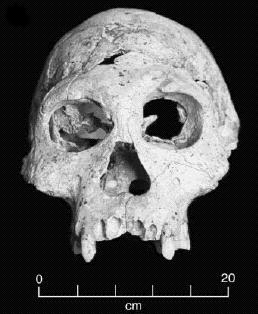
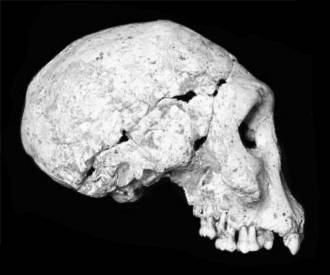
Dated at 1.8 million years old. Found at Dmanisi in Georgia. Its skull is intermediate between Homo habilis and Homo erectus in size and morphology. Post-cranial bones have been found, showing that while it had a primitive skull, it had relatively advanced lower limbs and spine, allowing greater mobility
Homo rudolfensis

Known from a skull dated at 1.9 million years.It had been classified with Homo habilis, but is increasingly classed as a distinct species.It has a mix of features, namely a modern-like brain case and a robust, large face
Homo erectus

Lived between 1.8 million years and 300,000 years ago. Homo erectus has been found across Asia, Europe and Africa. Evidence exists it used fire and sophisticated stone tools.

The famous “Turkana Boy” is a nearly complete skeleton of a juvenile (aged between 7-15) dated to 1.5 million years old He (his pelvis is male in morphology) is generally classified as Homo erectus, though some class him with Homo ergaster. Of note are his narrower thoracic vertebrae (less room for nerves) implying less control over thoracic muscles, needed for speech.
Homo ergaster
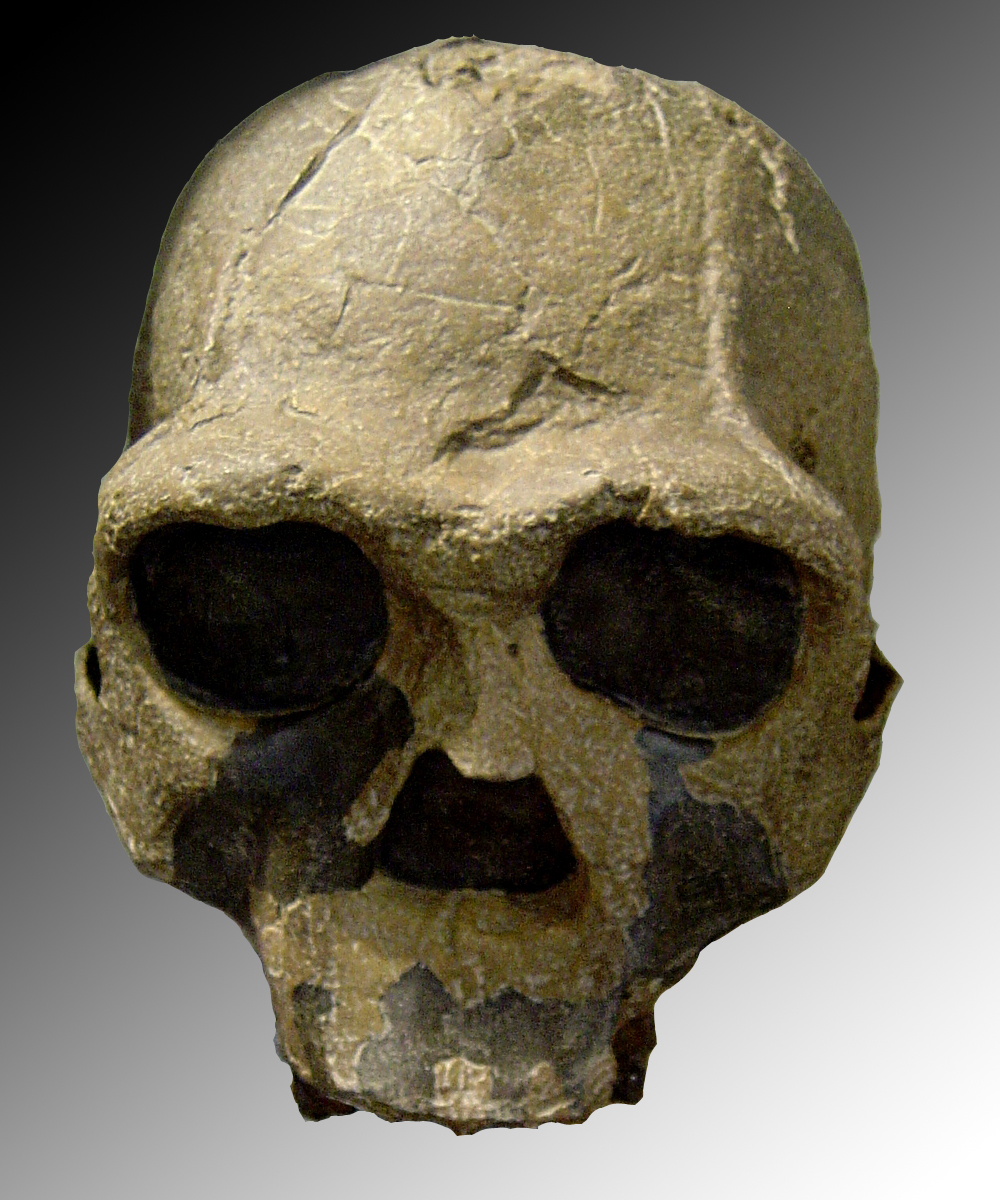
Lived between 2.5 and 1.7 million years ago. Viewed as a likely candidate for ancestor of Homo heidelbergensis.
Homo rhodesiensis
.jpg/563px-Broken_Hill_Skull_(Replica01).jpg)

Lived between 300,000 and 125,000 years ago. Some have argued that it was the direct ancestor of anatomically modern man. Others argue that it is better classified with Homo heidelbergensis
Homo heidelbergensis
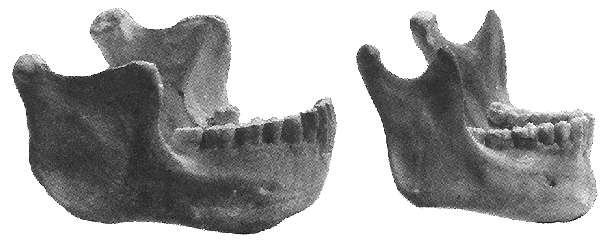
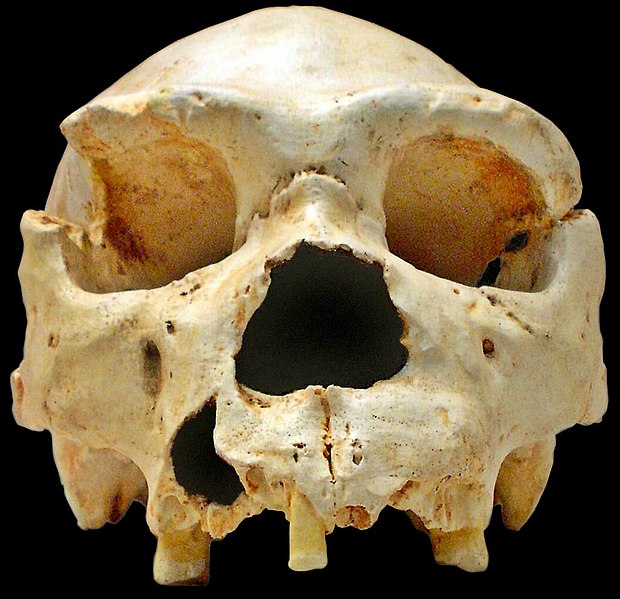
Also known as Homo sapiens (archaic). Lived between 600,000 and 200,000 years ago. Viewed as the most likely candidate for common ancestor of Homo sapiens and Homo neanderthalensis
Homo neanderthalensis
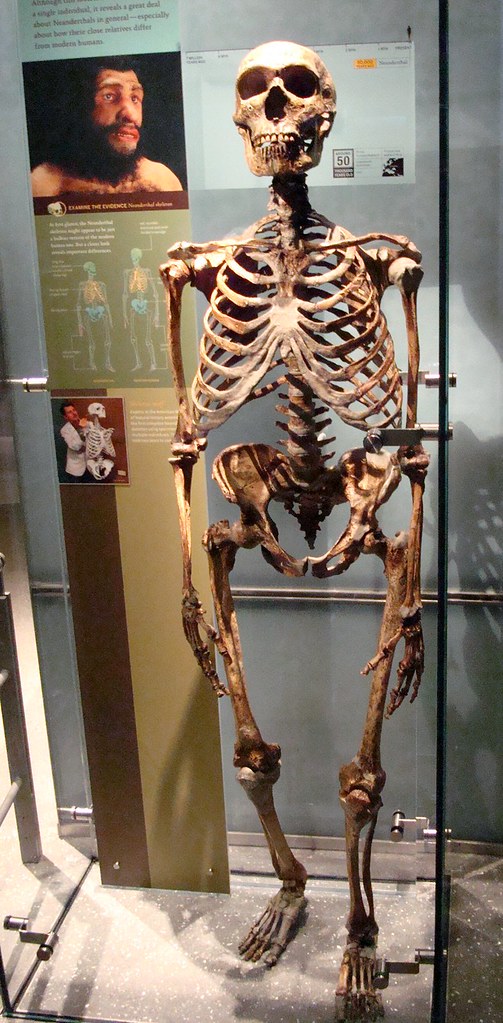
Lived between 230,000-30,000 years ago. Regarded as either a separate species or sub-species of human. They had thick, heavy bones and were likely extremely strong. They were the first known hominins to bury their dead. The recent sequencing of the Neanderthal genome shows that they did interbreed with Homo sapiens.
Homo sapiens
Some of the earliest anatomically modern human fossils come from the Kibish Formation in southern Ethiopia and have been dated to around 195,000 years
Anatomically modern human skull found at Qafzeh in Israel. Dated to approx. 100,000 years ago.
Lumpers versus splitters and the Dmanisi skull - combatting YEC disinformation
Anyone who follows paleoanthropology will be aware that some argue against the validity of certain species, preferring to group the existing fossils into fewer species. Certainly, there are strong arguments to be made for grouping the existing Homo fossils into fewer species, with a 2013 Science paper announcing the discovery of a complete skull from Dmanisi providing evidence for the 'lumper' viewpoint, that rather than belonging to several species within the genus Homo, early humans were better classified within a single species that evolved over time.
As one would expect, YECs have once again twisted and distorted this new by appealing to popular reports that claim it 'throws the story of human evolution into disarray', and therefore asserting that it has disproved human evolution. It hasn't. So, what's the fuss about? Here's the skull:
Two things need to be mentioned. It's old - 1.8 million years old. It also has a small braincase, with a cranial capacity of 547 cc. Now, here's an anatomically modern human skull
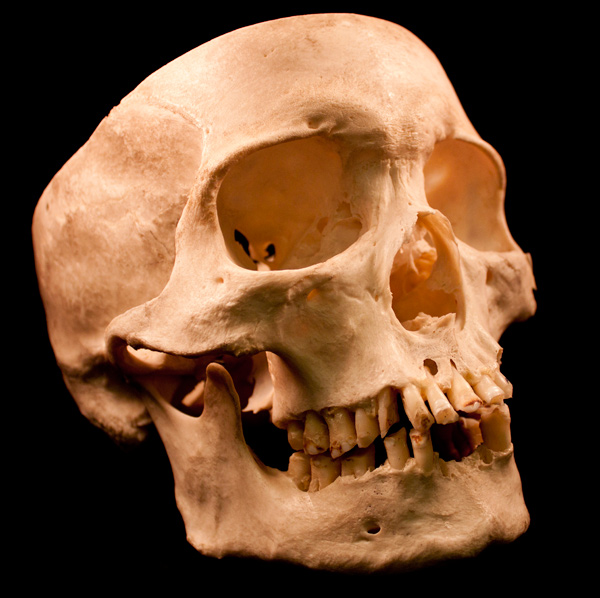
The average cranial capacity for an anatomically modern human skull is between 1300 - 1500 cc. There's certainly been considerable evolutionary change over the 1.8 million year period.
Those wondering what all the fuss is about could do worse than look at the paper which is freely available. From the abstract:
The site of Dmanisi, Georgia, has yielded an impressive sample of hominid cranial and postcranial remains, documenting the presence of Homo outside Africa around 1.8 million years ago. Here we report on a new cranium from Dmanisi (D4500) that, together with its mandible (D2600), represents the world's first completely preserved adult hominid skull from the early Pleistocene. D4500/D2600 combines a small braincase (546 cubic centimeters) with a large prognathic face and exhibits close morphological affinities with the earliest known Homo fossils from Africa. The Dmanisi sample, which now comprises five crania, provides direct evidence for wide morphological variation within and among early Homo paleodemes. This implies the existence of a single evolving lineage of early Homo, with phylogeographic continuity across continents.
In other words, this skull, along with other remains discovered from Dmanisi at that time are similar in shape and size to the earliest known members of the genus Homo found in Africa, but have widespread variation in shape.
As palaeoanthropologist John Hawks notes:
The essential claim: the shape variation among these four Dmanisi crania is approximately the same as the shape variation among all East African early Homo. Moreover, measured on the same axes, the shape variation among all these early Homo specimens is approximately equivalent to the shape variation among living humans, or the shape variation within living chimpanzees.
Not everyone agrees with this. BBC News reported palaeoanthropologist Fred Spoor from University College, London as saying:
"They do a very general shape analysis of the cranium which describes the shape of the face and braincase in broad sweeping terms," Prof Spoor said.
"The problem is that those Homo species are not defined using such a broad overview of what their general cranial shape is."
He added that the very specific characteristics that had been used to define H. erectus, H. habilis and H. rudolfensis "were not captured by the landmarks that they used".
"They did not consider that the thick and protruding brow ridges, the angular back of the braincase; and some details of the base of the cranium are derived features for H. erectus, and not present in H. habilis and H. rudolfensis."
I'm viewing the debate from the point of view of an interested outsider who has nothing riding on whether the data support multiple species of Homo, or a single evolving species. Having said that, John Hawks certainly makes a powerful point when he argues:
I have no objection if people want to use names for fossil samples, like Homo habilis or Homo rudolfensis. I just don't think we should pretend those names predict very much. The names get in the way more than they help..
Four of the five Dmanisi crania, good Homo erectus crania in most of their anatomy, have smaller endocranial volumes than KNM-ER 1470, the type specimen of Homo rudolfensis. The brain size of D4500, the most robust and male-like of the Dmanisi crania, is fully a third smaller than that of KNM-ER 1470. The matching D2600 jaw is almost the size of the Peninj mandible of Australopithecus boisei. The teeth are not robust australopithecine teeth, but they are extraordinarily large for Homo erectus, at least in some ways. That's not an outlier for Homo erectus, other mandibles, like Sangiran 6, have similar robusticity.We simply don't get much mileage out of pretending that these populations evolved in a bifurcating, non-mixing fashion. That simplistic population model requires us to posit far more species than can credibly have existed as independent entities.So we have learned the alternative: Our evolution was complicated. And now we can get to the business of understanding how and when important things happened.
Irrespective of whether early humans belonged to a single evolving species, or were members of three species, the fact of human evolution is not altered by this data. As the authors of the Dmanisi paper state:
The hypothesis of phyletic evolution within a single but polymorphic lineage raises a classificatory but not evolutionary dilemma, and it is premature to describe the rate(s) of evolution in this lineage, given the small available samples. (Emphasis mine) [11]
Once again: the data do not raise an evolutionary dilemma. Irrespective of how we classify the various Homo fossils, when we take an overall look at the hominin fossil record, we see two clear large-scale evolutionary changes, namely a trend towards obligate bipedality, and an increase in cranial capacity:
Large-scale evolutionary change in the human fossil record exists, and is not in dispute. Far from a ‘few teeth’, the fossil record is large enough to show clear evidence of these large-scale evolutionary changes. While exact details of the evolutionary family tree will change as more fossil data is discovered, the fact of human evolution just from the fossil record is no longer in doubt, and it is intellectually dishonest to pretend otherwise.
[1] Members of the Paranthropus genus have been omitted as they are accepted as member of a line that never led to humans and is now extinct
[2] Johanson, D.C., White, T.D., Coppens, Y.A new species of the genus Australopithecus (Primates: Hominidae) from the Pliocene of Eastern Africa. Kirtlandia (1978) 28:2-14.
[3] Alemseged, Zeresenay et al. "A juvenile early hominin skeleton from Dikika, Ethiopia". Nature (2006) 443:: 296–301
[4] Asfaw, B., White, T., Lovejoy, O., Latimer, B., Simpson, S., Suwa, G., “Australopithecus garhi: a new species of early hominid from Ethiopia” Science (1999) 284:629-635.
[5] Berger, L.R., Clarke, R.J., 1995. Eagle involvement of the Taung child fauna. Journal of Human Evolution (1995) 29:275-299.
[6] Herries, A.I.R., Shaw, J., “Palaeomagnetic analysis of the Sterkfontein palaeocave deposits: Implications for the age of the hominin fossils and stone tool industries” J Human Evolution (2011) 60:523-529
[7] Clarke R.J. “First ever discovery of a well-preserved skull and associated skeleton of Australopithecus” South African Journal of Science (1998) 94:460-464
[8] Granger D.E. et al "New cosmogenic burial ages for Sterkfontein Member 2 Australopithecus and Member 5 Oldowan" Nature (2015) doi:10.1038/nature14268.
[10] Berger, L. R.; de Ruiter, D. J.; Churchill, S. E.; Schmid, P.; Carlson, K. J.; Dirks, P. H. G. M.; Kibii, J. M. (2010). "Australopithecus sediba: a new species of Homo-like australopith from South Africa". Science (2010) 328: 195–204.
[11] Lordkipanidze D et al "A Complete Skull from Dmanisi, Georgia, and the Evolutionary Biology of Early Homo" Science (2013) 342:326-331
[11] Lordkipanidze D et al "A Complete Skull from Dmanisi, Georgia, and the Evolutionary Biology of Early Homo" Science (2013) 342:326-331















